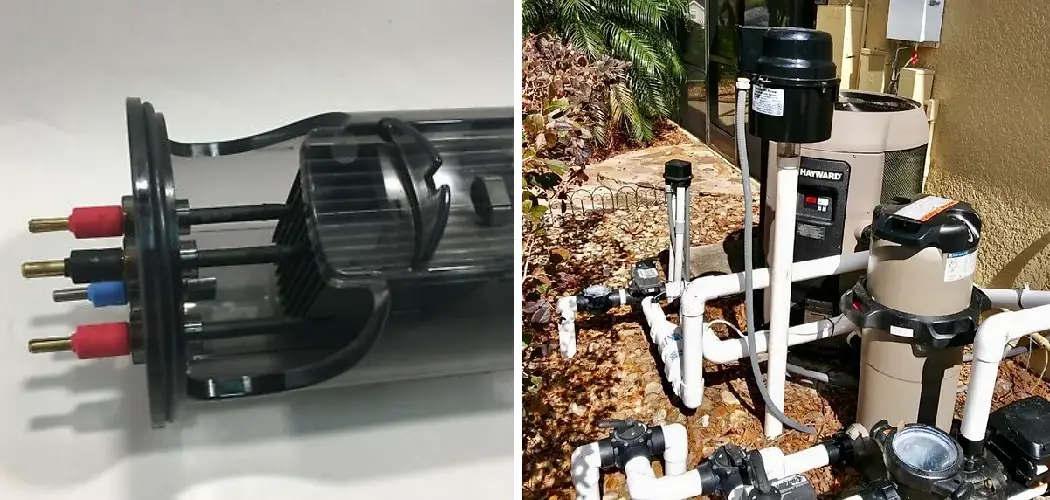There are several reasons why you should know how to tell if your chlorinator is working properly. Firstly, by understanding how to check the functionality of your chlorinator, you can ensure that your pool or spa water is safe and clean for use.
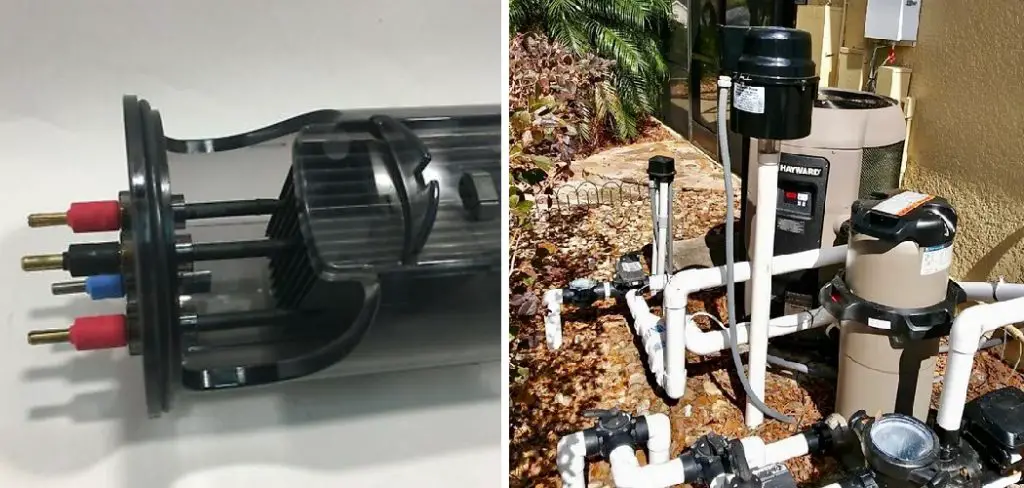
Chlorinators release chlorine into the water, which helps kill bacteria and other harmful microorganisms. If your chlorinator is not working, it could lead to a buildup of bacteria and algae in the water, making it unsafe for swimming or soaking.
The main advantage of telling if the chlorinator is working properly is that it ensures the safety and cleanliness of your pool. A malfunctioning chlorinator can lead to bacterial growth, algae buildup, and other water quality issues that can pose health risks for swimmers. In this blog post, You will learn in detail how to tell if chlorinator is working.
Step-by-step Instructions for How to Tell if Chlorinator is Working
Step 1: Inspect the Chlorinator
Start by inspecting the chlorinator unit itself. Look for any signs of damage or wear and tear, such as cracks, leaks, or broken parts. If you notice anything out of the ordinary, it could be a sign that your chlorinator is not working properly.
Step 2: Check the Water Flow
Next, check the water flow in your pool or spa. The chlorinator relies on a steady flow of water to distribute the chlorine evenly throughout the water. If you notice a decrease in water flow, it could be an indication that your chlorinator is not functioning correctly.
Using a pool or spa test kit, check the chlorine levels in your water. If the levels are too low or too high, it could be a sign that your chlorinator is not working properly. The ideal chlorine level for a pool is between 1 and 3 parts per million (ppm), and for a spa, it should be between 2 and 4 ppm.
Step 3: Inspect the Chlorine Tablets or Granules
If you use tablets or granules in your chlorinator, check to see if they dissolve properly. If they have not dissolved completely or have formed clumps, it could be a sign that your chlorinator is not working effectively.
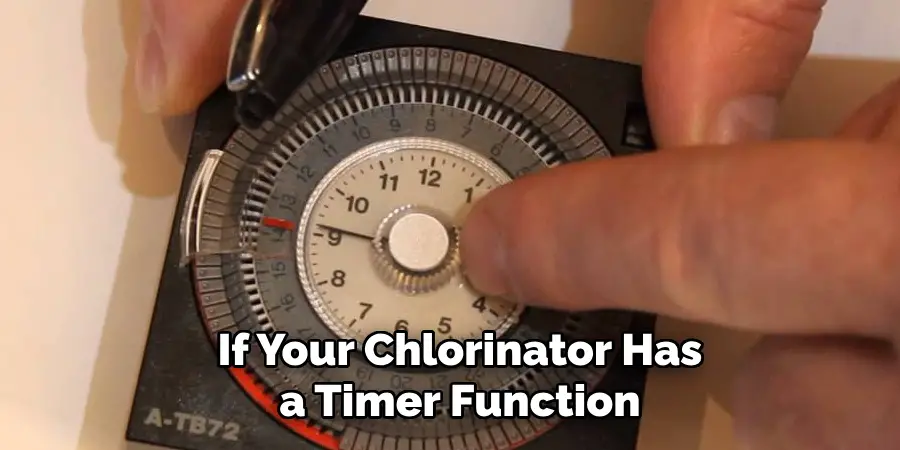
If your chlorinator has a timer function, set it correctly. A timer can help regulate the distribution of chlorine, so if it is not working properly or has been set incorrectly, it could affect the chlorine levels in your pool or spa.
Step 4: Look for Algae Growth
Algae growth can be a sign that your chlorinator is not working correctly. Even with proper chlorine levels, algae can still grow if the chlorinator is not functioning as it should. If you notice algae growth, troubleshooting your chlorinator may be time.
For saltwater pools, ensure the salt levels are within the recommended range (usually between 2,500-4,000 ppm). If the levels are too low, it can impact the effectiveness of your chlorinator and result in inadequate chlorine levels.
Step 5: Inspect the Chlorinator Cell
If your chlorinator has a saltwater system, check the cell for buildup or debris. A dirty or damaged cell can affect chlorine production and cause issues with your chlorinator’s performance. Many modern chlorinators have built-in error codes to help you troubleshoot issues. Consult the manufacturer’s manual for a list of error codes and instructions on how to address them.
Step 6: Consider Professional Maintenance
If you have followed all of these steps and your chlorinator is still not functioning correctly, it may be time to call a professional pool technician. They can inspect and repair your chlorinator or recommend a replacement if needed.
In addition to these steps, there are a few other things to keep in mind when it comes to maintaining your chlorinator. Regularly cleaning and maintaining your pool or spa can also help keep your chlorinator working properly. This includes backwashing the filter, skimming debris from the surface, and brushing the walls and floor of your pool.
Safety Tips for How to Tell if Chlorinator is Working
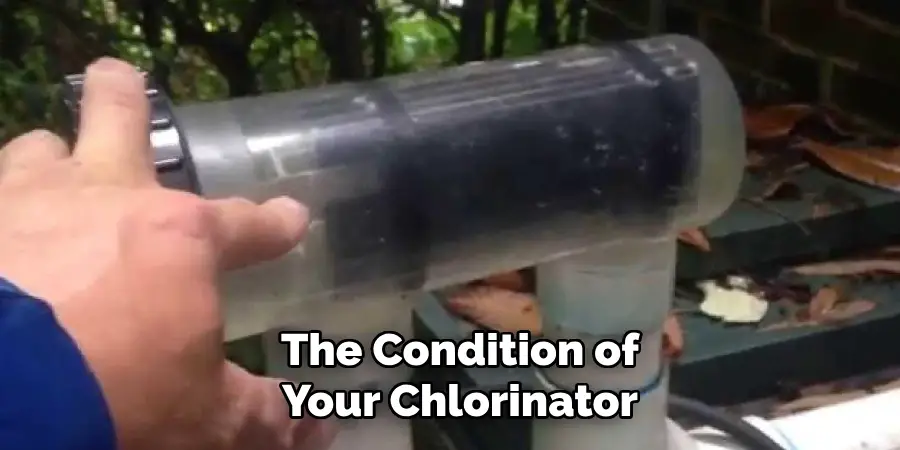
- Regularly Inspect the Chlorinator: It is important to regularly check the condition of your chlorinator to ensure that it is functioning properly. Look for any signs of damage or wear and tear, such as cracks or rust.
- Monitor Chlorine Levels: The main function of a chlorinator is to maintain proper chlorine levels in your swimming pool. Use a testing kit to regularly check the chlorine levels and adjust accordingly.
- Check for Leaks: If you notice a decrease in chlorine levels or water flow, your chlorinator may be leaking. Check all connections and fittings for any signs of leakage.
- Clean the Cell: The chlorine cell is responsible for producing the chlorine that sanitizes your pool water. Over time, the cell can become calcified and clogged, leading to decreased chlorine production. Regularly cleaning and maintaining the cell is crucial for proper functioning.
- Keep the Area Around the Chlorinator Clear: Make sure there are no obstructions or debris around your chlorinator that could hinder its functioning. This includes keeping plants and toys away from the unit.
- Follow Manufacturer’s Instructions: Always refer to the manufacturer’s instructions for proper installation, maintenance, and troubleshooting of your chlorinator. This will ensure that you are using the product correctly and safely.
- Consider a Professional Inspection: If you are unsure about the condition of your chlorinator or notice any unusual behavior, it may be beneficial to have a professional pool technician inspect it. They can identify any potential issues and provide appropriate solutions.
In addition to these safety tips, educating yourself on the various types of chlorinators available and their specific maintenance requirements is important. This will help you determine the best option for your pool and ensure its proper functioning.
Importance of Telling if Chlorinator is Working
1. Keeps the Pool Clean
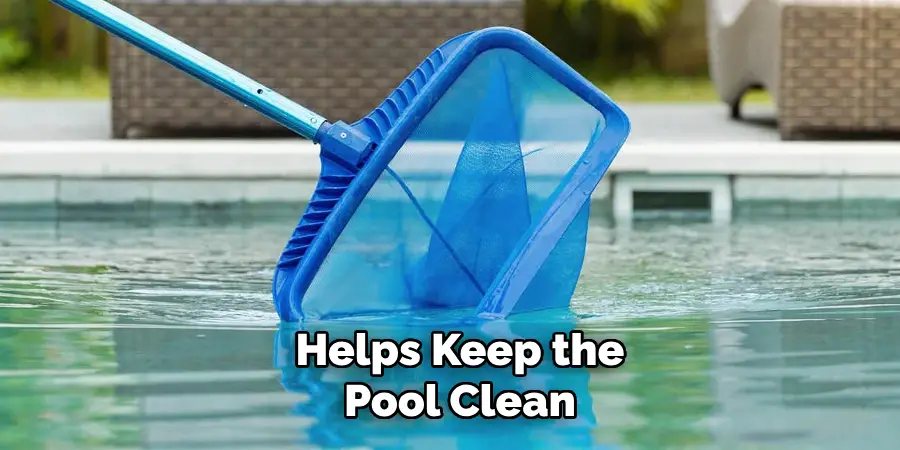
One of the main reasons to tell if a chlorinator is working is that it helps keep the pool clean. Chlorinators are responsible for adding chlorine to your pool, which plays a crucial role in killing bacteria and preventing algae growth. If your chlorinator is not working properly, you may end up with a dirty and unsanitary pool, putting you and your family at risk for illnesses and infections.
2. Saves Time and Effort
By regularly checking if your chlorinator is working, you can prevent any potential issues that may arise in the future. This saves you time and effort from having to deal with a malfunctioning chlorinator or cleaning a dirty pool. It also ensures that your pool maintenance routine runs smoothly, allowing you to enjoy your pool more rather than constantly worrying about its maintenance.
3. Prevents Over-chlorination
Knowing if your chlorinator is working can also prevent the risk of over-chlorination. Over-chlorination occurs when there is excess chlorine in the pool water, which can cause skin and eye irritation for swimmers. By monitoring your chlorinator’s functionality, you can ensure that the correct amount of chlorine is being added to your pool, keeping it safe for swimming.
4. Saves Money
A malfunctioning chlorinator can lead to costly repairs or replacements. Regularly checking if your chlorinator is working can catch any issues early on and address them before they become more serious and expensive. This will save you money in the long run and ensure your pool equipment functions efficiently.
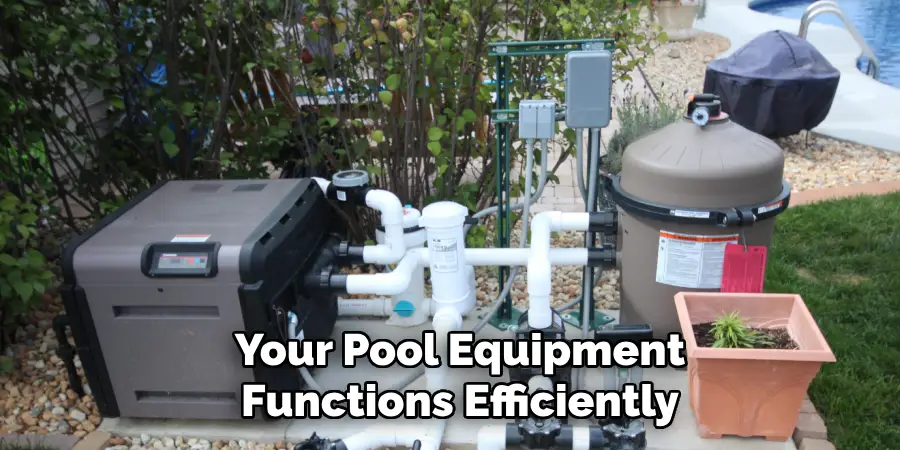
5. Maintains Proper PH Levels
Chlorinators not only add chlorine to your pool water, but they also help maintain the proper pH levels. If your chlorinator is not working, it can lead to imbalanced pH levels, which can result in cloudy or green pool water. This not only affects the overall appearance of your pool, but it can also affect the effectiveness of the chlorine in killing bacteria and preventing algae growth.
6. Promotes a Safe Swimming Environment
Regularly checking if your chlorinator is working ensures that your pool water is safe for swimming. Without proper levels of chlorine, bacteria, and other harmful microorganisms can thrive in your pool, putting swimmers at risk for illnesses. By maintaining a properly functioning chlorinator, you are creating a safe and healthy swimming environment for everyone.
7. Extends the Lifespan of Your Pool Equipment
Neglecting to check if your chlorinator is working can lead to issues that can damage or shorten the lifespan of your pool equipment. For example, excessive buildup or corrosion in your chlorinator can lead to clogs and ultimately cause the equipment to break down.
By regularly ensuring that your chlorinator is working properly, you can prevent any damage or wear and tear on your pool equipment, keeping it functioning for longer.
So, make sure to regularly check on your chlorinator’s functionality to ensure that your pool maintenance routine runs smoothly and effectively. Always remember to keep an eye on your chlorinator and prioritize its proper functioning in order to fully enjoy the benefits of having a clean and safe swimming pool.
Signs of a Working Chlorinator
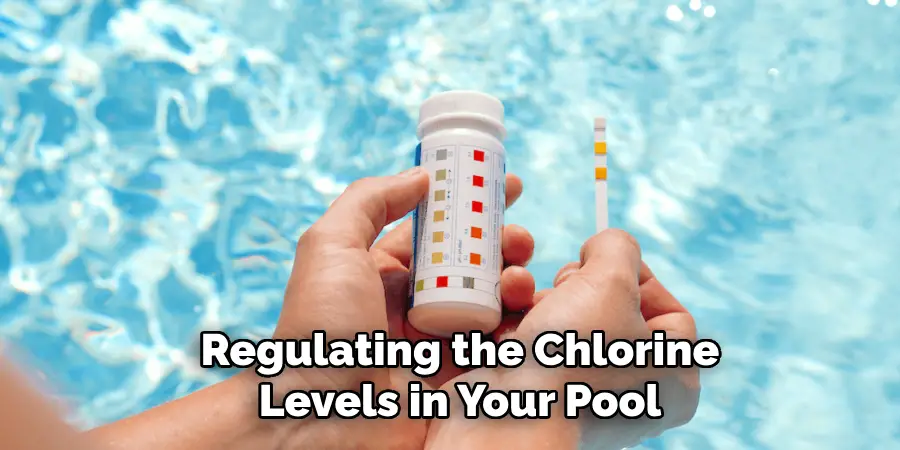
A working chlorinator is one of the most important factors in maintaining a clean and safe swimming pool. Chlorinators are responsible for regulating the chlorine levels in your pool, which helps prevent the growth of algae and harmful bacteria. But how do you know if your chlorinator is actually doing its job? Here are some signs that indicate your chlorinator is working properly:
- The water is clear and free of algae.
- The chlorine levels are consistently within the recommended range (1-3 parts per million)
- There is no strong odor of chlorine in the pool area
- The pH levels are balanced (between 7.2 – 7.8)
If you notice any of these signs, it means that your chlorinator is working effectively. However, it’s important to note that even with a working chlorinator, you should still regularly test your pool water and adjust the chlorine levels as needed.
Common Types of Chlorinators
Chlorinators are devices used to add chlorine to water in order to keep it free from bacteria and other harmful microorganisms. They are commonly used in swimming pools, spas, and even drinking water systems.
Several types of chlorinators are available on the market, each with its own advantages and disadvantages. This article will discuss the most common types of chlorinators and their features.
1. Floating Chlorinator
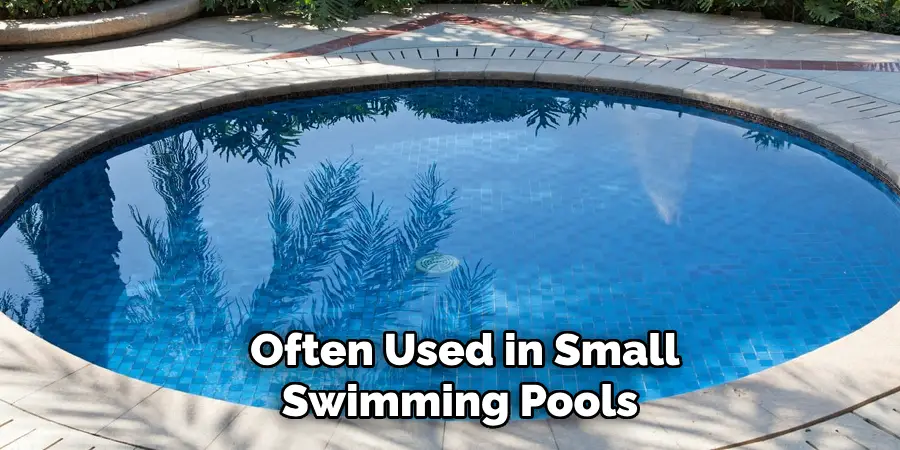
Floating chlorinators are the simplest type of chlorinator and are often used in small swimming pools or spas. They consist of a plastic or rubber container that can hold chlorine tablets or sticks, which then slowly dissolve into the water as it floats around.
One of the main advantages of a floating chlorinator is its affordability and ease of use. However, they may not be suitable for larger pools as they have limited capacity and require constant monitoring to ensure proper chlorine levels.
2. Inline Chlorinator
Inline chlorinators are installed directly into the pool’s circulation system, usually between the filter and the return jet. They work by injecting a controlled amount of chlorine into the water as it passes through the system.
One of the main advantages of an inline chlorinator is that it works automatically, so you don’t have to manually add chlorine to the pool. They also have a larger capacity than floating chlorinators, making them suitable for larger pools. However, they can be more expensive and may require professional installation.
3. Saltwater Chlorinator
Saltwater chlorinators use electrolysis to create chlorine from salt in the water. They have become increasingly popular among pool owners as they provide a more natural and gentler way of sanitizing the water.
One of the main advantages of a saltwater chlorinator is that it produces chlorine on demand, so there’s no need to manually add it. They also create a more consistent level of chlorine, resulting in cleaner and healthier water. However, they can be more expensive to install initially, and the saltwater can cause corrosion if the pool is not maintained properly.
4. UV Chlorinator
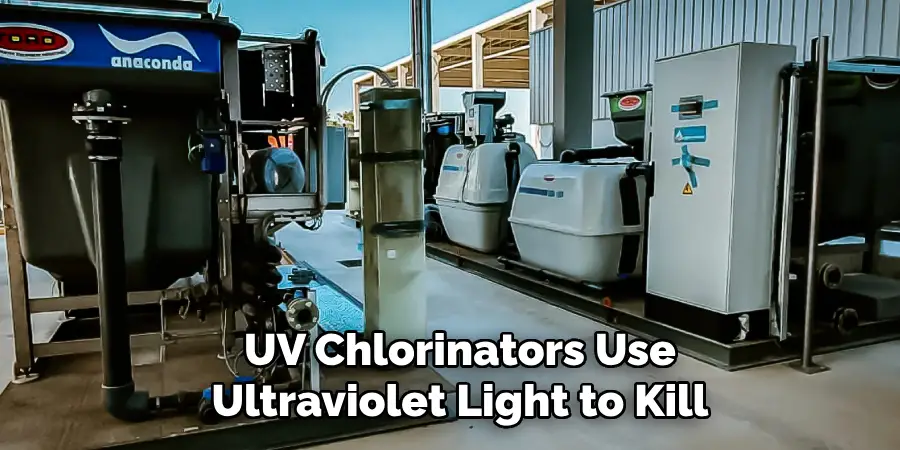
UV chlorinators use ultraviolet light to kill bacteria and other microorganisms in the water. They are often used in conjunction with other types of chlorinators to provide an extra layer of sanitization.
One of the main advantages of a UV chlorinator is that it doesn’t use chemicals, making it a more environmentally friendly option. It also doesn’t affect the pH level of the water, reducing the need for additional balancing chemicals. However, they may be less effective in heavily contaminated water and more expensive than other chlorinators.
Troubleshooting Common Issues with Chlorinators
Chlorinators are essential for maintaining the cleanliness of your swimming pool. However, like any other equipment, they can run into issues that may disrupt their functionality. This section will discuss some common problems you may encounter with your chlorinator and how to troubleshoot them.
1. Low Chlorine Levels
If you notice that your pool has low chlorine levels, it could be due to a few reasons. The first thing you should check is the output setting on your chlorinator. Ensure it is set at an appropriate level for the size of your pool.
Next, check the chlorine cell for buildup or debris that may be blocking the flow of chlorine. If there is a buildup, clean it with a cell cleaner and retest the levels.
If the output setting and cell are both fine, then it could be an issue with low salt levels in your pool. Low salt levels can also cause low chlorine production. Test your pool’s salinity and add salt if necessary.
2. High Chlorine Levels
On the other hand, if you notice that your pool has high chlorine levels, it could be a sign of an overactive chlorinator. Check the output setting and decrease it if needed. Too much salt in your pool could also be a cause, so make sure to test the salinity levels and adjust accordingly.
3. No Chlorine Production
If your chlorinator is not producing any chlorine at all, it could be due to a few reasons. First, check the salt levels in your pool and make sure they are within the recommended range. Next, check the power source and make sure it is connected properly. If the power source is fine, then it could be an issue with the cell itself. Check for any damage or calcification and clean or replace the cell if necessary.
4. Clogged Filter
A clogged filter can restrict the flow of water and affect the performance of your chlorinator. Check the filter regularly and clean or replace it as needed. This will help maintain proper water circulation and ensure that chlorine is evenly distributed throughout your pool.
5. Corrosion
Corrosion can occur in the cell of your chlorinator due to the high concentration of salt and chlorine. Regularly check for any signs of corrosion and clean or replace the cell if needed. It is also important to make sure that your chlorinator’s housing is properly sealed to prevent water from entering and causing damage.
6. Error Messages
Many modern chlorinators come with error codes that can help identify specific issues. If you encounter an error message, refer to the user manual or contact the manufacturer for troubleshooting steps.
7. Regular Maintenance
One of the best ways to prevent any issues with your chlorinator is by regularly maintaining it. This includes cleaning or replacing the cell, checking and adjusting salt levels, and ensuring proper water circulation. Following the recommended maintenance schedule will help keep your chlorinator running smoothly and prolong its lifespan.
By following these steps, you can troubleshoot and resolve common issues with your chlorinator, ensuring that your pool remains clean and safe for swimming. Remember to always consult the user manual or contact a professional if you have any concerns or encounter more complex problems.
Conclusion
The main disadvantage of understanding and knowing how to tell if a chlorinator is working is the constant maintenance and upkeep that it requires. As mentioned earlier, the chlorinator is regularly checked and cleaned to ensure its proper functioning.
This can be time-consuming and may require additional expenses, such as purchasing testing kits or hiring professionals for maintenance.
In conclusion, maintaining a properly functioning chlorinator is crucial for keeping your pool clean and safe to swim in. Regular maintenance and observation are key in determining if your chlorinator works correctly.
By checking the chlorine levels and flow rate and inspecting for any visible signs of damage or malfunction, you can ensure that your chlorinator is doing its job effectively. Reading this post has helped you learn how to tell if chlorinator is working. Make sure the safety precautions are carried out in the order listed.

